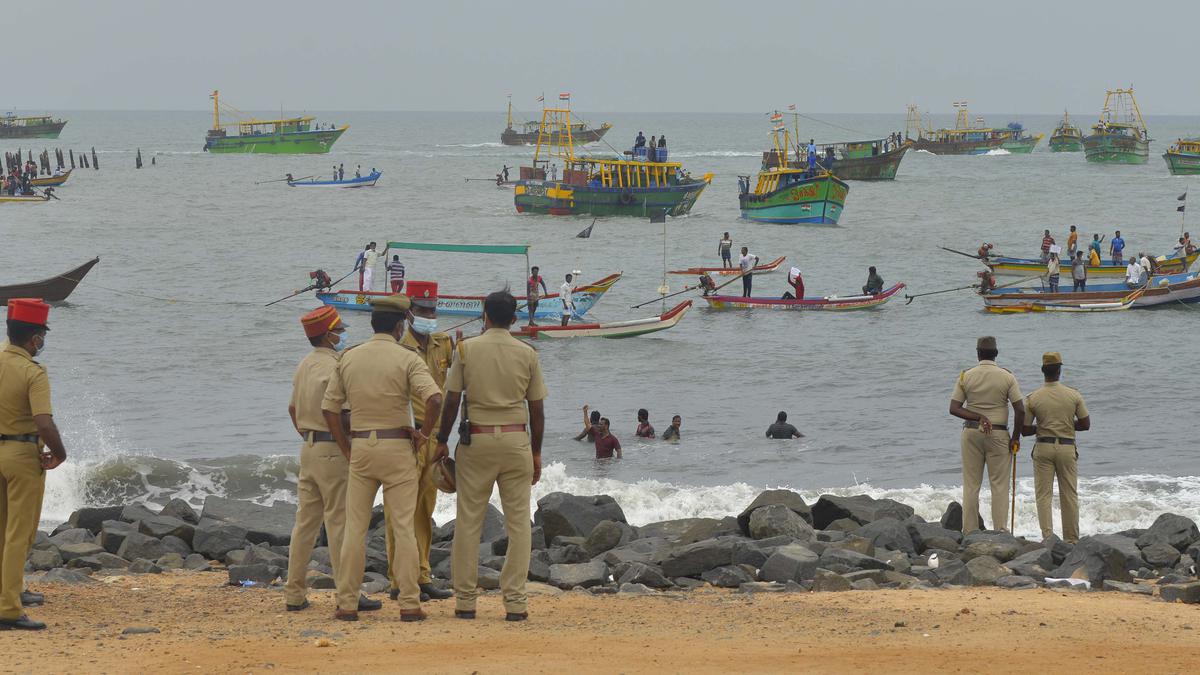Live Classes

The Supreme Court of India has given permission to fishermen using purse seine fishing gear to fish beyond territorial waters (12 nautical miles) and within the Exclusive Economic Zone (EEZ) (200 nautical miles) of Tamil Nadu, but observing certain restrictions. The Court’s interim order of January 24, 2023, against the banning of purse seine fishing by the Tamil Nadu Government in February 2022, seems to be more concerned about regulating fishing with administrative and transparency measures than about the conservation measures and obligations which a coastal state owes in its EEZ under the United Nations Convention on the Law of the Sea (UNCLOS).
However, conservation measures (as suggested in various regional conventions) and judgments of various tribunals (embodying conservation measures based on best science or relevant scientific evidence to control overfishing and protect endangered marine living resources from extinction) should have informed the order. Purse seiners tend to overfish, unlike traditional fishermen using traditional fish gear, thus endangering the livelihood of the traditional fisher.
Conservation and conventions
The top court should seek guidance from the obligations arising from the multilateral and regional conventions which are meant to bring in sustainable fishing practices over a certain period of time, thereby allowing a common resource such as fish to be naturally replenished. Under Articles 56.1(a) and 56.1(b)(iii) of UNCLOS, coastal states have sovereign rights to ensure that the living and nonliving resources of the EEZ are used, conserved and managed, and not subject to overexploitation. Access to the zone by foreign fleets is also solely within the coastal state’s discretion and subject to its laws and regulations.
In order to prevent overexploitation, coastal States must determine the total allowable catch (TAC) in the EEZ (Articles 61(1) and (2) of UNCLOS) in light of the best scientific evidence available. The guidance from the Convention for the Conservation of Southern Bluefin Tuna 1993 (SBT) could have also been sourced by the top court to enable recovery of depleted fishing stocks.
The crux of the SBT is TAC and distribution of allocations among the parties to the SBT, which are very relevant from the angle of conservation of general fishery. TAC and the catch quotas are aimed at putting sustainable use into practice among fishermen and maintaining maximum sustainable yield (MSY). The efforts to implement TAC and catch quota might face scientific uncertainty relating to safe limits to ensure MSY. In such a situation, the established international environmental law practice is to lean on adopting a precautionary approach.
Regulation of fishing methods
Merely restricting the purse seiner to fish on two days — Monday and Thursday from 8am to 6pm — (in the Court order) is not sufficient without regulating the fishing methods used. International legal efforts are gradually moving in the direction of abandoning the use of larges-cale pelagic nets. The huge size of the purse seine nets (2,000 metres in length and 200 m in depth) allows maximum catch for the purse seiners, in turn leaving behind insufficient catch for traditional fishermen. There are several regional organisations that either prohibit the use of large drift nets or at least call for their prohibition, such as the 1989 Tarawa Declaration of the South Pacific Forum.
The 1989 Convention for the Prohibition of Fishing with Long Drift Nets in the South Pacific goes as far as to restrict port access for drift net fishing vessels. The United Nations General Assembly passed Resolutions 44/225 (1989) and 46/215 (1991) supported and strengthened this development, calling for a moratoria on all largescale pelagic drift net fishing vessels in high seas. Although the conventions and the UN General Assembly resolutions are applicable to the state parties in the high seas, these are relevant in terms of preventing overfishing in general and the conservation of fishery management in the EEZ as well.
On nonselective fishing technology
The Court’s final judgment needs to look into nonselective fishing methods by purse seiners resulting in the bycatch of other marine living species (which could include, many a times, endangered species) — a potential ground for trade embargo. A party under Article XX (b) can take measures to protect human, animal or plant life provided it involves “conservation of exhaustible natural resources if such measures are made effective in conjunction with restrictions on domestic production or consumption” (Article XX(g).
In Shrimp/Turtle, the appellate body held that the U.S. measure — which prohibited imports of shrimp from any country that did not have a turtle-excluder fishing gear comparable to that of the United States — fit the Article XX(g) exception for the conservation of exhaustible natural resources. However, the appellate body also found that the U.S.’s measures had been applied in a way that violated the chapeau: by treating certain Asian countries differently than America’s trading partners in the western hemisphere.
Despite the best conservation measures and regulation of fishing methods adopted by the authorities, it will be a challenge in dealing with the limitless character of the seas which renders a common resource such as fish available for exploitation by all. The theory of Garrett Hardin, ‘The Tragedy of the Commons’, which says ‘Freedom in a commons brings ruin to all’ should convince all fishermen, especially the purse seiners of Tamil Nadu, that they must cooperate in complying with conservation measures.
Ocean area and availability of fish
Ocean Zones
Maritime Zone